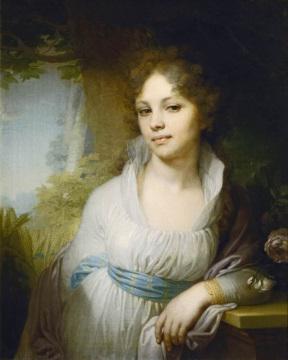Main literary trends
Literature, like no other kind of creativehuman activity, is connected with the social and historical life of people, being a bright and imaginative source of its reflection. Fiction develops with society, in a certain historical sequence and we can say that it is a direct example of the artistic development of civilization. Each historical epoch is characterized by certain moods, views, attitude and outlook, which inevitably manifests itself in literary works of literature.
The generality of the world outlook, reinforced by commonartistic principles of the creation of a literary work among individual groups of writers, forms various literary trends. It is worth saying that the classification and isolation of such trends in the history of literature is very conditional. Writers, creating their works in different historical epochs, did not even suspect that literary critics would reckon them after years to a literary trend. Nevertheless, for the convenience of historical analysis in literary criticism, such a classification is necessary. It helps to understand more clearly and structurally complex processes of development of literature and art.
Main literary trends
Each of them is characterized by a number ofknown writers who are united by a clear ideological and aesthetic conception, stated in theoretical works, and a general view of the principles of creating a work of art or an artistic method that, in turn, acquires historical and social traits inherent in a certain direction.
In the history of literature it is customary to distinguish the following main literary trends:
- Classicism. It was formed as an artistic style and worldview by the XVII century. At its core lies the fascination with the ancient art, which was taken as a model for imitation. In an effort to achieve the simplicity of perfection, similar to the ancient models, the classicists developed strict canons of art, such as the unity of time, places and actions in drama, which must be strictly followed. The literary work was emphasized artificially, intelligently and logically organized, rationally built.
All genres were divided into high (tragedy,ode, epic), which sang heroic events and mythological subjects, and low ones depicting the everyday life of people of the lower classes (comedy, satire, fable). The classics preferred drama and created works for the theater stage, using not only the word, but also visual images, a certain plot of the plot, facial expressions and gestures, scenery and costumes. The entire seventeenth and early eighteenth centuries passed under the shadow of classicism, which was succeeded by another direction after the destructive power of the French bourgeois revolution.
- Romanticism is a comprehensive direction inart, which powerfully manifested itself not only in literature, but also in painting, philosophy and music, and in every European country it had its own specific features. The subjective view of reality and dissatisfaction with the surrounding reality united the Romantic writers, which forced them to construct other pictures of the world, leading away from reality. The heroes of romantic works are mighty non-ordinary personalities, rebels defying the imperfection of the world, the universal evil and dying in the struggle for happiness and universal harmony. Unusual characters and unusual life circumstances, fantastic worlds and unrealistically strong profound experiences writers conveyed with the help of certain artistic means, the language of their works is very emotional, sublime.
- Realism. Pathos and elation of romanticism changed this direction, the main principle of which was the depiction of life in all its terrestrial manifestations, very real typical heroes in real typical circumstances. Literature, according to writers realists, was to become a textbook of life, so the characters were depicted in all aspects of the personality - social, psychological, historical. The main source of influence on a person, shaping his character and outlook, is the environment, real life circumstances, with which heroes constantly come into conflict because of deep contradictions. Life and images in literary works are given in development, showing a certain tendency.
Literary directions reflect the most commonparameters and features of artistic creativity in a certain historical period of development of society. In turn, within the framework of any direction, several currents can be distinguished, which are presented by writers with close ideological and artistic attitudes, moral and ethical views, and artistic and aesthetic methods. So, within the framework of romanticism, there were such currents as religious-mystical, religious-moralistic, civil romanticism. Writers-realists also were adherents of different trends. In Russian realism, it is customary to single out a philosophical and sociological trend.
Literary trends and trends -classification, created in the framework of literary theory. It is based on philosophical, political and aesthetic views of the epochs and generations of people at a certain historical stage of the development of society. However, literary trends can go beyond a single historical epoch, so they are often identified with an artistic method common to a group of writers who lived at different times, but express similar spiritual and ethical principles.
</ p>>







